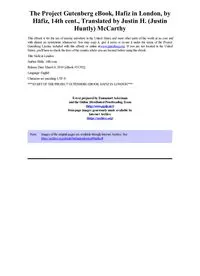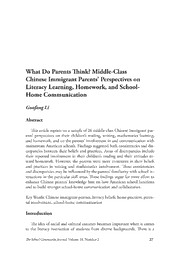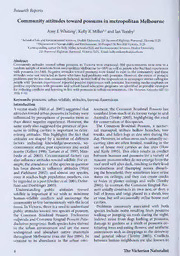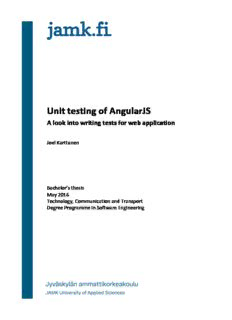
Preview Unit testing of AngularJS
Unit testing of AngularJS A look into writing tests for web application Joel Karttunen Bachelor’s thesis May 2016 Technology, Communication and Transport Degree Programme in Software Engineering 1 Description Author(s) Type of publication Date Karttunen, Joel Bachelor’s thesis 05 2016 Language of publication: English Number of pages Permission for web publi- 30 cation: (X) Title of publication Unit testing of AngularJS A look into writing tests for web application Degree programme Software Engineering Supervisor(s) Rantala Ari Assigned by Protacon Solutions Oy Abstract This task was assigned by Protacon Solutions Oy with the objective set to study and imple- ment unit testing in AngularJS JavaScript framework as part of the development process of the customer’s application. The thesis focuses on studying the AngularJS framework and if and how its design philoso- phy complements the unit testing principles. The focus was on studying unit testing via de- veloping unit tests iteratively onto the application created beforehand. The tests were created with Jasmine testing framework, a tool recommended by the Angu- larJS development team. Other testing frameworks were studied before the thesis, how- ever Jasmine was chosen to be examined more closely. The thesis results in several unit tests created for the customer’s application, and knowledge was provided for the company about the unit testing of a modern JavaScript web application to be distributed among the co-workers in the company. In addition, the backbone for developing and expanding the unit tests for the application and other future applications developed with AngularJS was laid down. The tests were cre- ated with trial-and-error method, and best practices were recorded to be expanded upon, determined by the nature of the application and what was best suited for it. Keywords/tags JavaScript, AngularJS, Unit testing Miscellaneous 2 Kuvailulehti Tekijä(t) Julkaisun laji Päivämäärä Karttunen Joel Opinnäytetyö, AMK 05 2016 Sivumäärä Julkaisun kieli 30 Englanti Verkkojulkaisulupa myönnetty: (X) Työn nimi AngularJS yksikkötestaus Yksikkötestien teko web-sovellukseen Tutkinto-ohjelma Ohjelmistotekniikan koulutusohjelma Työn ohjaaja(t) Ari Rantala Toimeksiantaja(t) Protacon Solutions Oy Tiivistelmä Opinnäytetyön toimeksiantajana toimi Protacon Solutions Oy. Tehtävänä oli tutkia ja kehittää yksikkötestejä AngularJS- sovelluskehyksellä kehitettyyn web-pohjaiseen asiakkaalle toteutettuun sovellukseen. Työ keskittyi AngularJS-sovelluskehyksen ominaisuuksien tutkimiseen ja miten niitä pystyi hyödyntämään sovelluksen yksikkötestejä kehitettäessä, ja kuinka AngularJS sovelluskehyksen rakenne tuki yksikkötestien suunnitelun teesejä. Testit kehitettiin käyttäen Jasmine-testaussovelluskehystä, mikä on AngularJS-kehittäjien suosittelema työkalu testien kehitykseen. Muita testaussovelluskehyksiä tutkittiin pikaisesti ennen työn aloittamista, mutta niistä päätettiin luopua ennen työtä. Tuloksena syntyi useita yksikkötestejä asiakkaan AngularJS-sovellukseen, ja osaamista ja tietotaitoa yritykselle yksikkötestien tekemisestä AngularJS-sovelluskehyksellä kehitettyyn sovellukseen. Tarkoituksena on jakaa tätä tietotaitoa eteenpäin. Lisäksi tuloksena oli pohjustus uusien testien tekemiseen ja vanhojen lisäkehitykselle asiakkaan sovelluksessa. Testit kehitettiin yrityksen ja erehdyksen kautta, josta voi jatkaa parhaaksi todetuin menetelmin testien kehitystä. Testit suunniteltiin ja toteutettiin juuri kyseiseen sovellukseen sopiviksi. Avainsanat (asiasanat) JavaScript, AngularJS, yksikkötestaus Muut tiedot 1 Contents 1 Introduction ............................................................................................................ 3 2 Specifying the problem .......................................................................................... 4 3 AngularJS framework ............................................................................................. 6 3.1 Introduction to AngularJS ............................................................................ 6 3.2 Structure of AngularJS framework .............................................................. 7 3.2.1 Dependency Injection ................................................................................ 7 3.2.2 Scope ......................................................................................................... 7 3.2.3 Controller ................................................................................................... 8 3.2.4 Service ..................................................................................................... 10 3.2.5 Directive ................................................................................................... 11 4 Software testing ................................................................................................... 14 4.1 Introduction to software testing ............................................................... 14 4.2 Levels of tests ............................................................................................ 14 4.3 Unit tests ................................................................................................... 15 5 Implementation of tests to AngularJS application ............................................... 17 5.1 Tools and methods .................................................................................... 17 5.1.1 Jasmine .................................................................................................... 17 5.1.2 Spies ......................................................................................................... 18 5.1.3 Promises .................................................................................................. 19 5.2 Implementing Unit Tests ........................................................................... 20 5.2.1 Initial setup .............................................................................................. 20 5.2.2 Testing controllers ................................................................................... 22 5.2.3 Testing services........................................................................................ 24 5.2.4 Testing directives ..................................................................................... 26 6 Conclusions ........................................................................................................... 28 References .................................................................................................................... 30 2 Figure 1: Defining a controller ........................................................................................ 9 Figure 2: A Angular service using $resource service to make calls to backend ........... 11 Figure 3: Defining a new directive................................................................................ 12 Figure 4: Injecting directive to view template ............................................................. 13 Figure 5: Levels of testing, by scale .............................................................................. 15 Figure 6: Requirements can be mocked with only required parts implemented ........ 16 Figure 7: Creating a jasmine spy .................................................................................. 18 Figure 8: Evaluating spy after test ................................................................................ 19 Figure 9: Structure of application and test files ........................................................... 21 Figure 10: Mock resource is created to provide reusable methods for mocking. ....... 22 Figure 11: The beforeEach section of the controller test ............................................ 23 Figure 12: Implementing tests to controller ................................................................ 24 Figure 13: Testing a service method that uses HTTP POST .......................................... 25 Figure 14: Verify that no request remain unfulfilled after each test ........................... 26 Figure 15: Test failed due to wrong expectation ......................................................... 26 Figure 16: The beforeEach section of directive test ..................................................... 27 Figure 17: Executing a directive test ............................................................................ 27 Acronyms TDD Test Driven Development BDD Behaviour Driven Development HTML Hyper Text Markup Language CSS Cascading Style Sheets PHP Hypertext Preprocessor 3 1 Introduction Testing is a key part of application development and should be a standard in every company wanting to succeed in today. However, are there applications, where some elements require more attention for testing than others? In the past, web applications were mostly structured by processing every request on the server side, and afterwards views were generated for the web browser to dis- play. The client side interactivity was provided by some small JavaScript snippets, yet the core logic of the whole application rested within the server side code (Graetz, A brief history of single-page applications.) What has changed? Today, web application design has moved increasingly into de- pending more on client side execution for logic, with popular JavaScript libraries be- ginning from such as JQuery, Knockout, and moving to frameworks like AngularJS and EmberJS. The server side architecture can be as simple as some lightweight PHP framework with REST architecture, while the client side web page handles not only display logic with views, but also the application’s business logic (Graetz, A brief his- tory of single-page applications.) What about testing? Writing unit tests can be viewed as a norm in standard server- side programming languages such as C# and PHP. They have years of development with them and standardized tools and methods to write efficient unit tests for the application. But when the main business logic moves to the browser side of the appli- cation, what then? How, and what do the tests need to accomplish the task they are set to do? What tools to use? Do they differ, and if so, how? Of course, web applications have been tested before, and probably also successfully. But do these new shiny frameworks offer easy and simple implementation of unit and other type of tests into the software? AngularJS framework is described to be created with testability in mind (AngularJS: Developer Guide, Unit testing.) As a new developer looking into the framework and the promises it is offering, in this document methods used to test a fresh AngularJS application are described, part of the development of which the author of the thesis was. 4 The work was done in assigning company, Protacon Solutions Oy. The tests were cre- ated using the tools and environments provided by the company. 2 Specifying the problem The process described in this document started while the author worked as devel- oper in a newly founded AngularJS project. The whole AngularJS framework had to be learned it mostly on-the-go. As the framework is created with testability in mind – or so the development team behind it says – the idea of studying these claims emerged to see if they were true. As the company had not really done any unit test- ing on client side of a web application project, the theme for this study was set. As a rather new developer in the field of programming, unit testing concepts and methods were much to none existent, so at start I the unit testing of other applica- tions was studied, mostly some backend unit tests created for .Net project. As the knowledge of unit testing principles began to grow, it was time to set those princi- ples to the previously created AngularJS application, and do the testing in Angular way. The AngularJS part of the testing was rather straight forward. Usually the tests were written component by component, improve and iterate over and over. As the REST architecture used in the application makes the service calls rather similar, some util- ity components were needed to be used only for the tests. While testing the application, some rather good points about the structure of the ap- plication, and what was wrong with it, emerged. As the AngularJS framework was new and the understanding of it in the start was rather limited, some controllers and other components were bloated and became difficult to test afterwards. In this pro- ject, these too-big-to-fail components were a good example of why unit testing should be done before, or at the same time as the development of the application, and TDD, or BDD can be a good thing. Most of the unit testing carried out in the application was mocking and isolating the components from each other, as they should be. Of course, there are other points of 5 view for what unit tests should do, as should they interact more broadly with other components of the application; however, this case study focuses only on the iso- lated, smallest unit testing cases of the application. This study consists of three larger parts listed as follows. First, there is some background information about the AngularJS framework and its structure, components and usage. As the framework can be rather odd-looking for a developer with background in for example jQuery library, some examples are made and key components are described. Afterwards the philosophy behind unit testing is explained. Second, the tools used in the unit testing of the AngularJS application are explained. Finally, the results of how testable the AngularJS application is are given a thought, along with any notices of how one should structure their components to be more testable. 6 3 AngularJS framework 3.1 Introduction to AngularJS AngularJS is a JavaScript framework created and managed by Google. Its main pur- pose is to bring useful architectural features from server side programming lan- guages to client side programming. AngularJS frameworks several key points that make it good can be described as follows (Freeman 2014, 3): Extendable: AngularJS is made to be extendable. It is easy to develop new features to your existing AngularJS application. Maintainable: AngularJS applications are easy to debug and fix, which makes them easier to maintenance. Testable: AngularJS supports unit and end-to-end tests, which helps in finding bugs and design flaws. Standardized: AngularJS extends HTML5 technologies and uses the capability of modern browsers, which means one can write the Angular app and en- hance it with other outside frameworks and libraries as you desire. The framework is also described as following: AngularJS was created to solve the problem with creating dynamic views with HTML, which was not really designed to be used in that. AngularJS aims to solve these problems by extending the HTML lan- guage with framework specific attributes, rather than abstracting the HTML, CSS or JavaScript code to control the view like some other libraries tend to do (AngularJS: Developer Guide, Introduction.) AngularJS is a versatile and powerful tool, which gives the developer a chance to quickly create reusable components and views. One objective that should be taken into consideration, at least when starting to use the Angular framework, is to learn to code components in the Angular way, which can be very different from other JavaS- cript libraries developer may have used in the past. 7 3.2 Structure of AngularJS framework 3.2.1 Dependency Injection “Dependency Injection (DI) is a software design pattern that deals with how compo- nents get hold of their dependencies. The Angular injector subsystem is in charge of creating components, resolving their dependencies, and providing them to other components as requested." (AngularJS: Developer Guide, Dependency Injection.) Dependency injection in AngularJS framework enables the different components, such as controllers or services to require other components to be injected to the cur- rent scope of the component. Dependency injection in AngularJS consists of two ser- vices, the $injector and $provide. $provide service handles the requests for Angular services, factories, values etc. All the components listed are in fact just shortcuts to the $provide service, which is called when the component is required in the application. $injector service is responsible for creating the instances for components, such as services that the $provide gives. One single $provide instance is created for the whole AngularJS application and the it injects the requested components as needed with it’s $get method. Injectable functions consist of service, directive, filter and fac- tory functions (AngularJS Git hub wiki, Understanding Dependency Injection.) 3.2.2 Scope The AngularJS’s scope is a centre part for the framework. Scope’s job is to bind the code behind logic of the controller into the view to display the data to user. This is called data-binding. Each data binding to scope adds a watcher function to the Angu- larJS’s core $watch list. The $watch lists contain every binding the page has, and the list is used to update the actual displayed data during the $digest loop, if the value that has been watched is changed from the previous iteration of the loop. This chain of events is called Dirty Checking.
Description:The list of books you might like

The Mountain Is You

The 48 Laws of Power

The 5 Second Rule: Transform your Life, Work, and Confidence with Everyday Courage

Corrupt (Devil's Night #1)

DTIC ADA509401: Do Not Sacrifice the Marine Corps for MARSOC to Succeed the MARSOC Closed Loop Personnel Policy Proposal
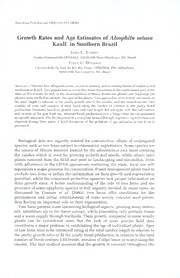
Growth Rates and Age Estimates of Alsophila setosa Kaulf. in Southern Brazil

Bülten No 32 - Ocak 2014

Elementos de Matemáticas y Aplicaciones

Andrea Lercari LA NOBILTÀ CIVICA A GENOVA E IN LIGURIA DAL COMUNE CONSOLARE ALLA

Soil Survey of Nez Perce National Forest Area, Idaho (2006)

bahçecilik kalanchoe yetiştiriciliği
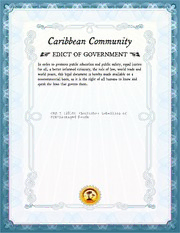
CRS 5: Labelling of Pre-packaged Foods

Asia Pacific Viewpoint 2006: Vol 47 Index

Shadow Work: Face Hidden Fears, Heal Trauma, Awaken Your Dream Life

The Rough Guide to Istanbul, 1st Edition (Rough Guide Travel Guides)
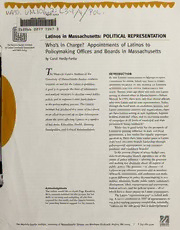
Latinos in Massachusetts
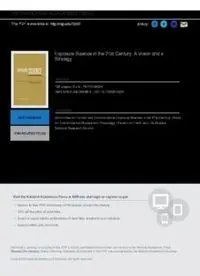
ES21 Report
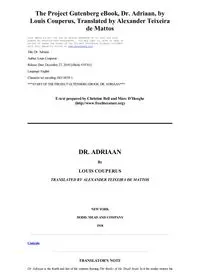
Dr Adriaan by Louis Couperus
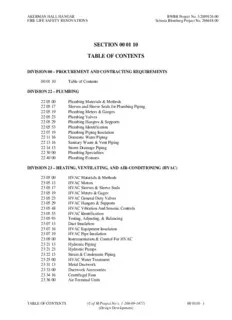
ÿþM icrosoft W ord - 0 0 0 1 1 0 TOC . doc
